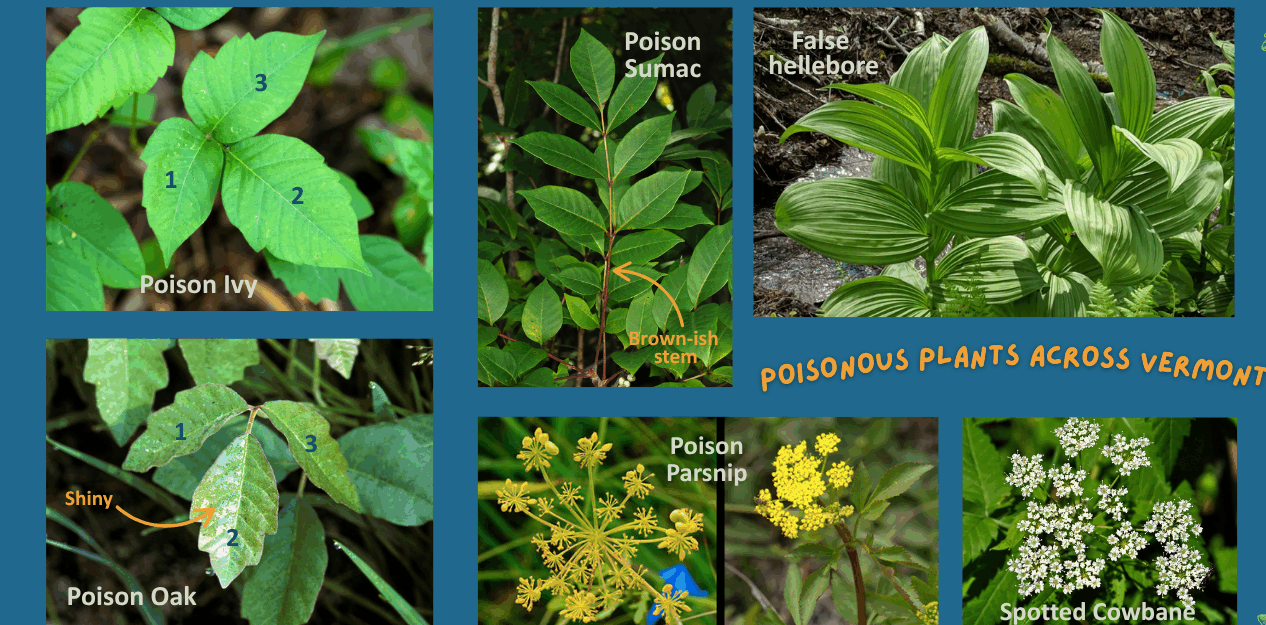
Hiking season is right around the corner—in a few weeks, you may see leaves turn beautifully orange, red, and yellow. But as you trek through your favorite trail, make sure you know what green (and sometimes multicolored) poisonous plants to avoid. Here are some easy ways to avoid a bad itch & rash:
Poison ivy:
- Three leaflets per leaf, sometimes having a shiny glow to them.
- Leaves can have smooth, toothed, or lobed edges, and can be reddish in spring, green in summer, and turn vibrant colors in the fall.
- No spikes or thorns!
- Poison ivy contains urushiol, which is an oily substance also found in poison oak and poison sumac plants. Urusiol causes an allergic skin reaction in most people, and leaves bad rashes and burns if not treated promptly.
Poison oak:
- Like poison ivy, it has three leaflets and has a shine.
- Grows best in full sun and moist, fertile soils, but can grow anywhere with shade.
- The stems of poison oak can be smooth and light brown or gray-brown with a velvety texture, and they may be covered in aerial roots when growing as a vine.
Poison sumac:
- Found often in wetland areas in many southern and central parts of Vermont.
- Compound leaves with 7-13 leaflets, smooth edges, and pointed tips. If there are berries, they are normally white and hang down in loose clusters.
Poison parsnip (wild parsnip):
- Yellow, flat-topped umbels (like Queen Anne’s Lace but yellow).
- Compound leaves with more than 5 leaflets, resembling a rosette when young.
- Phototoxic sap causes phytophotodermatitis (sun-sensitive skin reaction), leading to burns, blisters, and rashes.
- It can grow up to 4 feet tall.
- Normally found in roadsides, fields, and other disturbed areas.
To protect yourself on your next hike, roadside drive, or casual stroll near the river:
- Learn how to identify: Familiarize yourself with their appearances at various stages of growth.
- Wear protective clothing when outdoors: Wear long sleeves, long pants, long socks, and even bring gloves when in areas where poisonous plants are common.
- If you think you have been exposed: Leave the trail and immediately wash your skin with soap (detergent or dishwashing soap) and water. Do multiple rinses, and cool off with a rinse of cold water. If you have rubbing alcohol, wash the exposed area with it.
- Do not burn or compost poisonous plants: This can cause the toxins to be released into the air or soil.
- If you suspect poisoning, seek medical attention, especially in cases of severe reactions or ingestion.